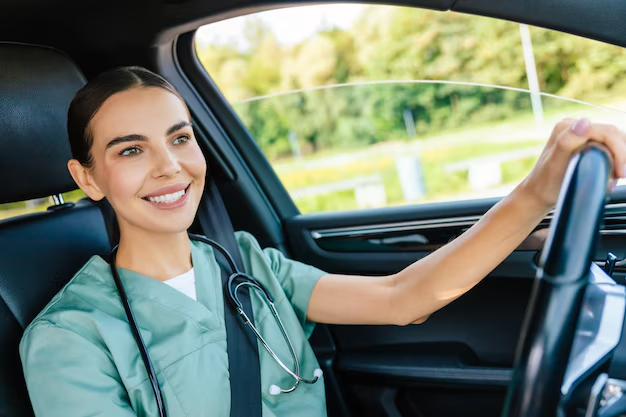Regaining the Wheel: When to Drive After Cataract Surgery
For anyone undergoing cataract surgery, the primary goal is clear: to restore vibrant, unclouded vision and improve quality of life. Amidst these transformative changes, many patients are eager to resume daily activities like driving. So, how soon can you drive after cataract surgery? This question is vital, balancing the excitement of clearer vision with the need for safety and proper recovery. Let's explore what you need to know, from expert recommendations to practical tips for ensuring a smooth transition back to the driver's seat.
Understanding Cataract Surgery and Recovery
What Is Cataract Surgery?
Cataract surgery is a common procedure designed to replace the eye's cloudy natural lens with a clear artificial one. This quick outpatient surgery often enhances vision significantly and requires minimal downtime. However, it's important to recognize that healing involves a process where patience is key.
The Recovery Timeline
Post-surgery recovery is usually smooth, but it varies slightly for everyone. Many people experience noticeable improvements in vision within a few days after surgery, but full stabilization of vision can take several weeks. Immediately after surgery, it's recommended to rest and protect the eye to facilitate healing.
Driving After Cataract Surgery: What to Consider
Initial Recommendations
Right After Surgery: It's strongly advised not to drive yourself home after cataract surgery. Your vision may be temporarily blurry, and you could still be under the effects of anesthesia, making it unsafe to operate a vehicle.
First 24-48 Hours: During this period, your eye will be adjusting, and your vision may fluctuate. You are generally advised to avoid driving to ensure the eye heals properly without unnecessary strain.
When Is It Safe to Drive Again?
While the timeline for when you can safely drive varies, here are some general guidelines:
Clearance from Your Eye Doctor: One of the most critical steps is to have an appointment with your eye doctor, usually scheduled within a few days post-surgery, where they will assess your vision and give guidance on when you can resume driving safely.
Functional Vision: Only drive if you feel your vision is clear enough to read road signs and comfortably make out details without strain.
Comfort with Bright Lights: Cataract surgery can sometimes heighten sensitivity to light, an important consideration for driving. Ensure that you are comfortable with the level of light and glare, including during different times of the day.
Personal Considerations
Besides general safety recommendations, consider your personal situation:
Habitual Driving Needs: If daily driving is a significant part of your routine, careful planning around surgery dates and post-operative appointments is crucial.
Comfort Levels and Adaptations: Some individuals might need additional time adjusting to changes in depth perception or visual clarity, impacting their driving confidence.
Safety First: Practical Tips for Returning to Driving
Start Slowly: Begin with short drives in familiar areas to rebuild your confidence and get accustomed to any changes in vision.
Check for Glare Solutions: Sunglasses or anti-glare lenses can be helpful to reduce discomfort from bright sunlight or headlights.
Monitor Your Vision: Be vigilant about any changes in how your eyes adjust to environments and stop driving if you notice blurriness or discomfort.
Choose Daylight Drives: Initially drive during daylight hours when visibility is optimal and avoid night driving until you are confident and comfortable.
Avoid High-Traffic Areas: Begin with routes that have lighter traffic to reduce stress and the risk of sudden decisions.
Stay Informed: Keep your follow-up appointments and communicate any concerns with your eye doctor.
Related Eye Health Considerations
Understanding Eye Sensitivity and Sun Protection
Post-cataract surgery, patients often experience increased light sensitivity as their eyes adjust. Wearing sunglasses outdoors can help manage this and protect your eyes from UV light, reducing stress on newly healed eyes.
The Importance of Regular Vision Check-Ups
Regular follow-ups with eye care professionals ensure your vision remains optimal over time. These routine checks can detect any gradual changes that might affect driving or overall eye health.
A Closer Look at Driving with Monovision or Multifocal Lenses
Some cataract surgeries involve fitting special lenses like monovision or multifocal lenses, designed to improve focus at various distances. Adjusting to these lenses can take practice, so discussing any concerns with your surgeon can guide your return to confident driving.
Quick Reference Guide: Tips for Driving Post-Surgery 🚗
- Clearance from your eye doctor is essential ✔️
- Start with short, familiar routes 🗺️
- Opt for daytime driving initially 🌞
- ** Use sunglasses to manage glare** 🕶️
- Avoid high-traffic areas until you're fully comfortable 🛣️
- Communicate any lingering vision issues 📞
Navigating Post-Surgical Life
Returning to driving after cataract surgery is a journey of balancing enthusiasm with practical steps. By prioritizing safety, adhering to medical advice, and allowing time for adjustment, most individuals can confidently return to driving. Remember, the pivotal aspect is individual recovery pace, which varies from person to person. Engage with your healthcare provider about any unique concerns you have. Your new clear vision deserves to be celebrated—and safely enjoyed on and off the road.
